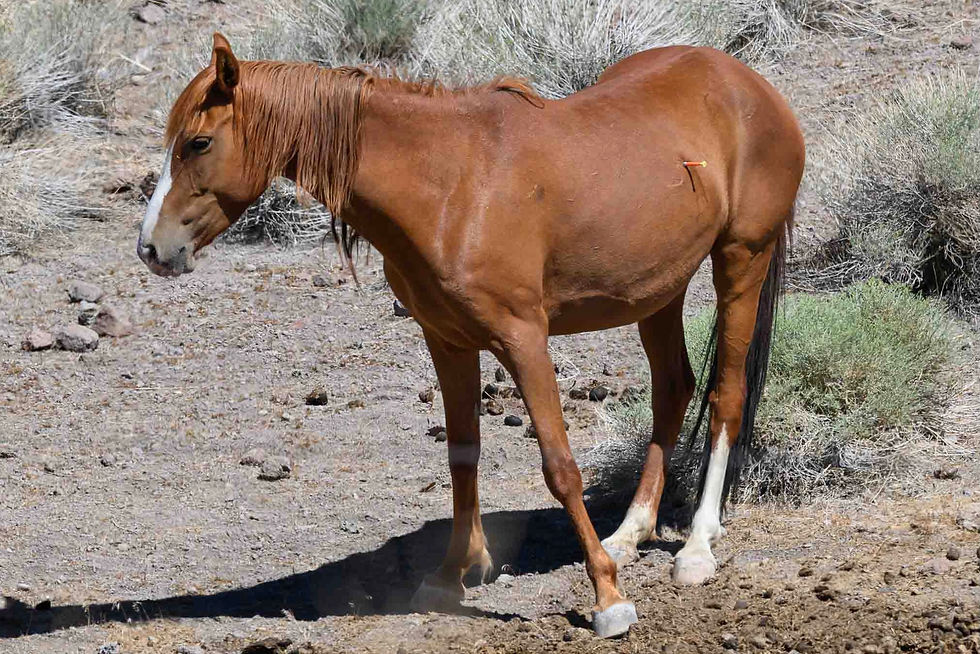Are America’s wild horses the answer to wildfires? – a photo essay
- Wild Horse Fire Brigade

- Jul 26, 2023
- 3 min read
One man is on a mission to promote the grazing habits of feral herds as a way to stop extreme blazes from starting and spreading
- by Ilie Mitaru

Since moving to a remote mountain region just south of Interstate 5 on the Oregon-California border in 2014, William Simpson, 70, has assumed responsibility for the care of 120 wild horses that roam his land. He has also adopted 60 more as part of an effort to study the effect that grazing has on managing grass, brush and other fuel for wildfires in the face of increasingly extreme blazes.
“I started watching the horses and seeing what they were doing,” says Simpson. “They were managing the fuel.”
He calls the project the Wild Horse Fire Brigade, and hopes the discoveries he makes from living among the animals will contribute to the debate around the role herbivores can play in wildfire mitigation.


Simpson argues that the steep decline of herbivores in the region – the deer population in California has shrunk to less than 500,000 from an estimated peak of about 2m in 1960 – is a factor in the state’s overgrown forests and grasslands, which in turn feeds increasingly extreme wildfires.
“We’ve lost our herbivory so now we have abundant, abnormally high levels of vegetative materials – that is what’s driving the fires,” says Simpson.

Federal protection was granted to wild horses and burros in 1971 in an effort to stop their decline. This quickly led to a population surge and a few years later the Bureau of Land Management (BLM), which has jurisdiction over most wild horse lands, was tasked with mitigating the rapid growth. The agency began removing wild horses from public lands in annual round-ups. Last year, 20,000 horses were removed from public lands. Nearly 8,000 of those were adopted or sold, and 1,622 were given fertility treatment.

The agency spent more than $84m (£65m) on the long- and short-term care of the wild horses in 2022. Simpson believes that money doesn’t need to be spent. He is on a mission to prove these large herbivores should instead be strategically located in critical wilderness areas to manage wildfires. “That’s a win-win for everybody,” he says.

Simpson describes his method as “Goodallian”, after the famed primatologist Jane Goodall. He spends every day among the animals, knows them by name and temperament, and is able to record novel behaviour within the species. He shares his findings with an array of niche industry publications and on his website, where he has published more than 150 articles in the past nine years.

“What I’ve been able to do is get so close to the horses I can smell them, I can touch them, I can look at their parasites, I can pull ticks off them,” he says. “There’s so much that’s unknown about wild horses and how they live.”
In 2018, a fire tore through Siskiyou county, where Simpson’s land is located. The Klamathon fire scorched 38,000 acres before it was contained. Simpson’s home and immediate surroundings remained largely undamaged. Simpson says that is down to the horses.

As the frequency and intensity of wildfires have increased, Simpson says he is increasingly receiving inquiries – from fire departments, ranchers and insurance representatives – all curious to learn more about the role wild horses may play in reducing the risk of wildfire.
“People are finally starting to listen,” he says.
Find more age of extinction coverage here, and follow biodiversity reporters Phoebe Weston and Patrick Greenfield on Twitter for all the latest news and features



Comments